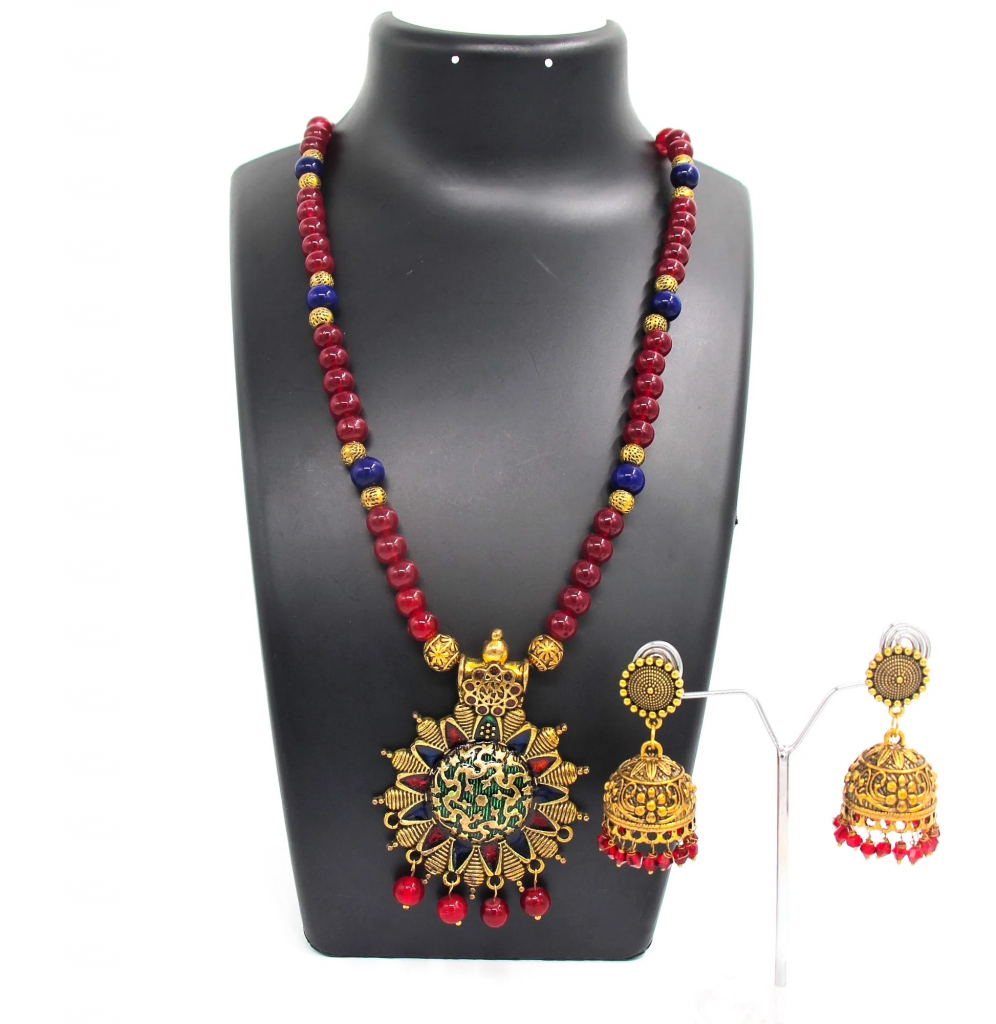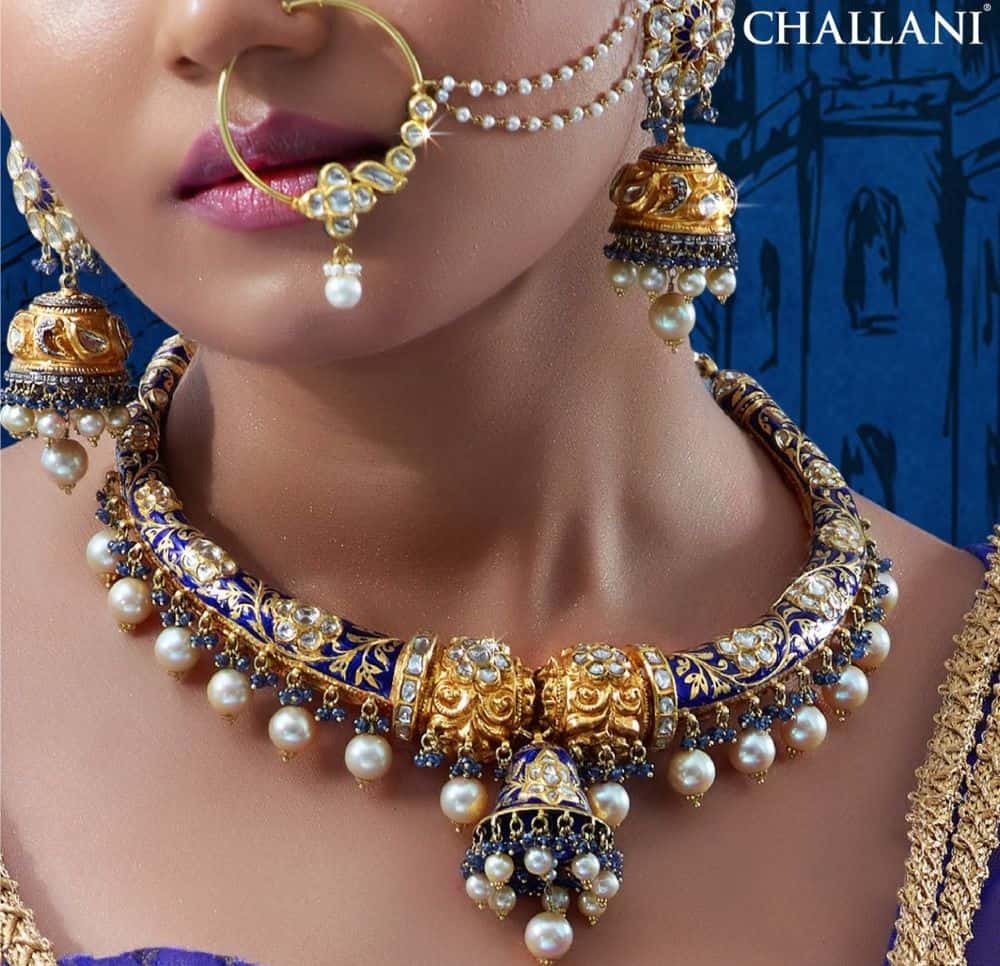
Minakari or Meenakari is the process of painting and colouring the surfaces of metals and ceramic tiles through enameling originating in Safavid Iran.
Meenakari is practiced as an art form and commercially produced mainly in Iran, Afghanistan, Pakistan and India (the term Kundan is more widely used in India).
Minakari art usually involves intricate designs mainly using geometric shapes and designs, and is applied as a decorative feature to serving dishes, containers, vases, frames, display ornaments and jewelry.

History
The art of enameling metal for ornamental reasons has been traced back to the Parthian and Sassanid period of Iranian history. However the meticulous ornamental work seen today can be traced back to Safavid Iran around the 15th century.
The Moghuls introduced it into India and perfected the technique making the design applied on objects more intricate.
The craft reached its peak in Iran during the eighteenth and nineteenth century. In the twentieth century Iranian artisans specializing in meenakari were invited to other regions to assist with training local craftsmen.
In India Rajasthan and Gujarat are most famous for their Meenakari artifacts and jewelry.

Enameling or Meenakari is the art of coloring or decorating a metal surface by attaching or fusing pieces of different mineral substances, over it.
Enameling is considered the most alluring and technical of all metal decorations. In the past enameling was only done on gold, but presently it is done other metals like silver, copper etc.
The art of decorating metal with enameling or Meenakari was alien to India and was introduced by the Mughals.
Raja Man Singh of Amber brought Meenakari to Rajasthan at the turn of the 16th century. Man Singh brought skillful Minakars from the Mughal palace at Lahore and established them in Jaipur, which became the center of Meenakari.

The technique of Meenakari requires a high degree of skill and application. The piece of metal on which meenakari is to be done is fixed on a lac stick. Delicate designs of flowers, birds, fish etc are etched or engraved on it. This leads to the creation of walls or grooves, to hold color.
Enamel dust of required color is then poured into the grooves and each color is fired individually. The heat of the furnace melts the color and the colored liquid gets spread equally into the groove.

This process is repeated with each color. As each color is individually fired, colors, which are most heat resistant, are applied first, as they are re-fired with each additional color.
As a rule, white is the first color applied and red the last. After the last color has been fired, the object is cooled and burnished or polished with agate.
The depth of the grooves filled with different colors determines the play of light. Both Silver and Gold can be used as a base for meenakari.

A limited number of colors, like gold, blue, green and yellow, stick to silver, whereas all available colors can be applied to gold, making it the preferred medium of enamellers.

The Meenakar often works with a team of craftsmen. As Meenakari is generally done on the reverse side of Kundan jewellery, the Meenakar has to work with the goldsmith, the engraver or Ghaaria, the designer or Chitteria and Jadiya who applies the gems on the Kundan or gold.
The finished produced is a marvel of the expertise of these different craftsmen and their techniques.

Jaipur is the main center of Meenakari. Traditional Mughal colours like red, green and white, dominate the art of enameling from Jaipur. The rich, ruby red color used here is highly sought after.
Nathdwara, Bikaner and Udaipur are also famous for their silver Meenakari. Pratapgarh is known for glass enameling. Delhi and Banaras are also important centers for Meenakari.











2 replies on “The Allure of Rajasthan’s Meenakari Jewellery”
Beautiful…… I want to buy, how to order
Please explore the following shopping link :
https://www.google.com/search?q=Meenakari+Jewellery+of+Rajasthan&tbs=vw:g&tbm=shop&ei=qc-nY5LcPNiJz7sPl72WMA&start=0&sa=N&ved=0ahUKEwjS1M7D9ZP8AhXYxHMBHZeeBQY4PBDy0wMIghA&biw=1319&bih=657&dpr=1